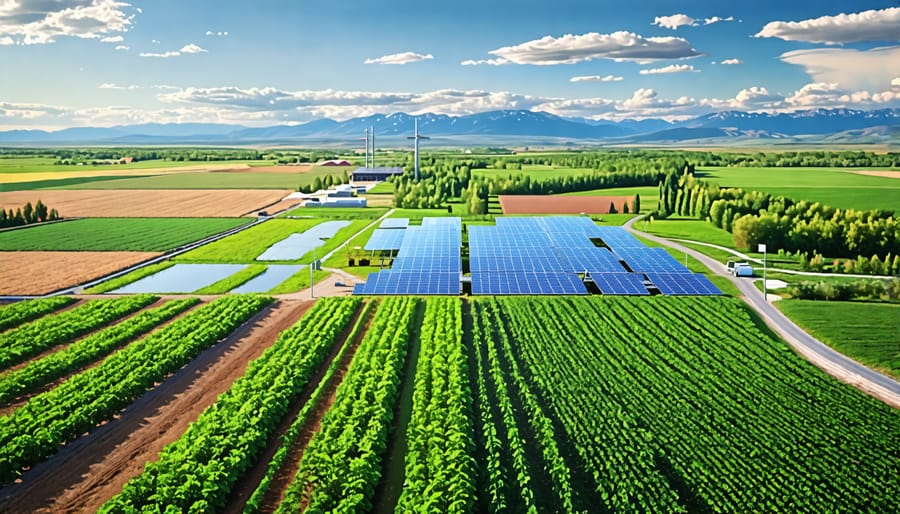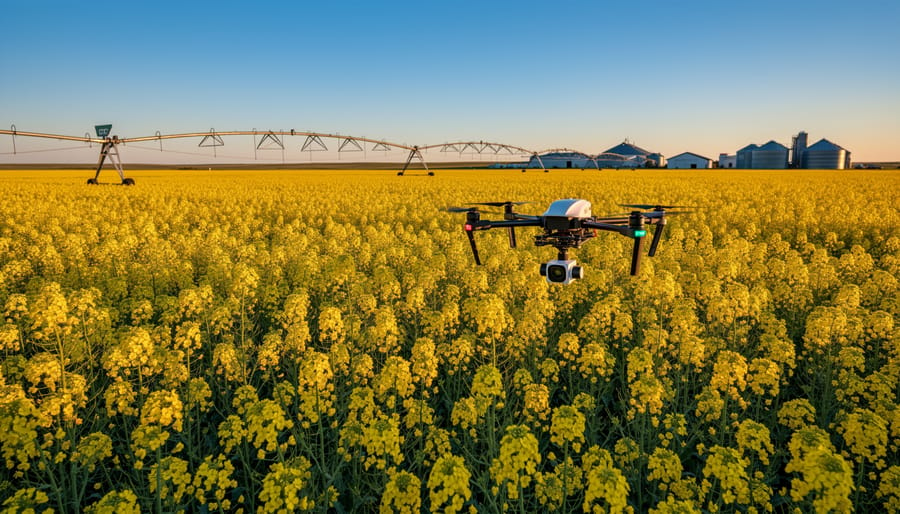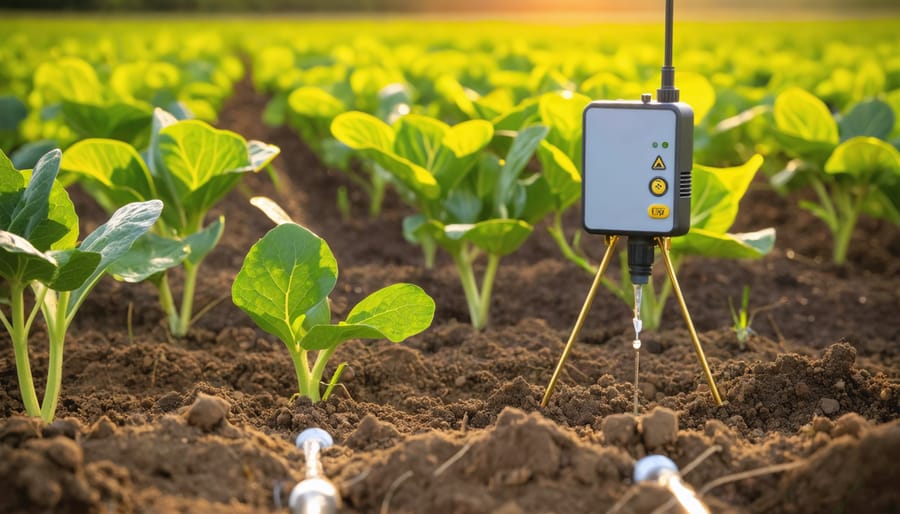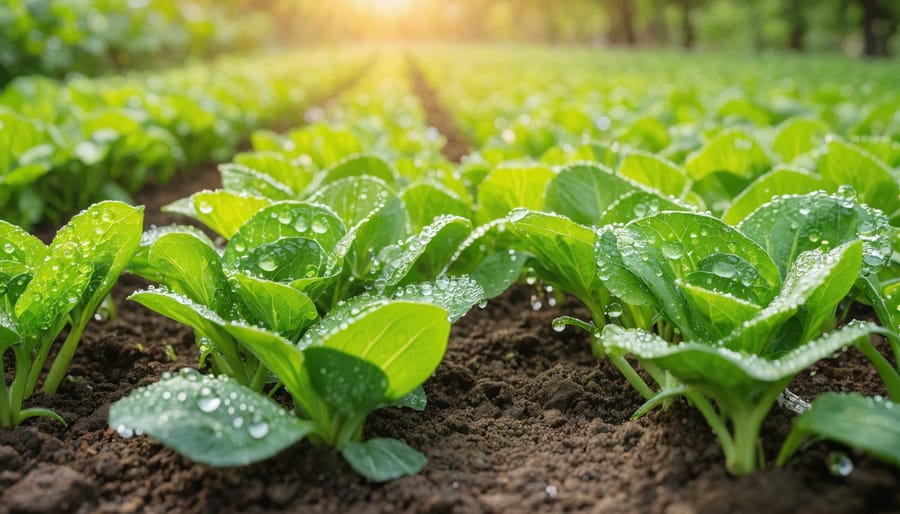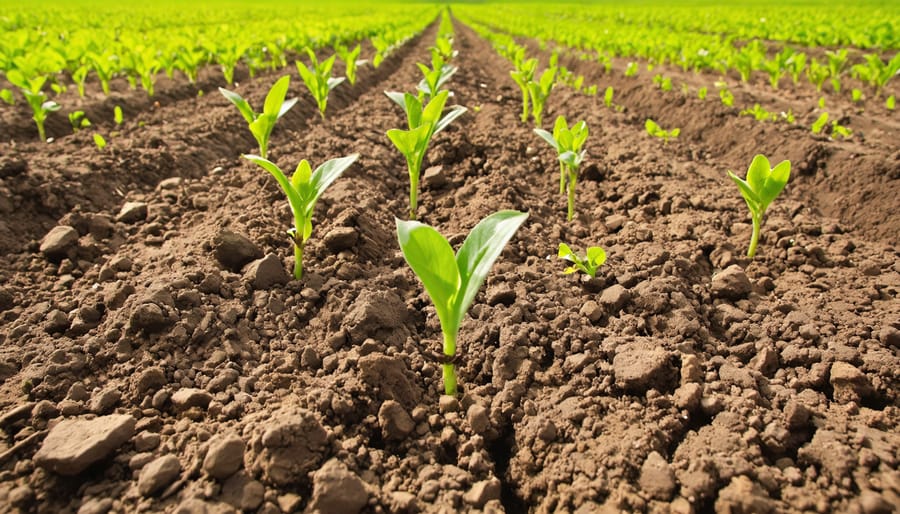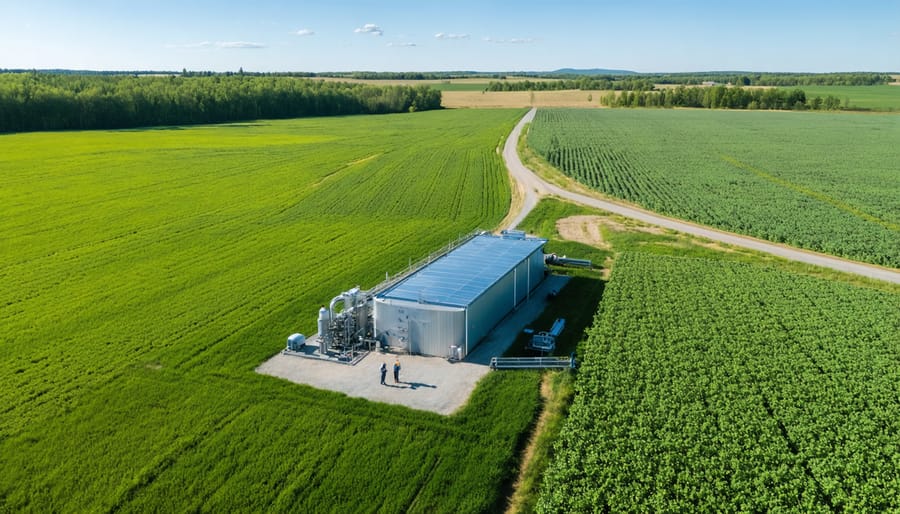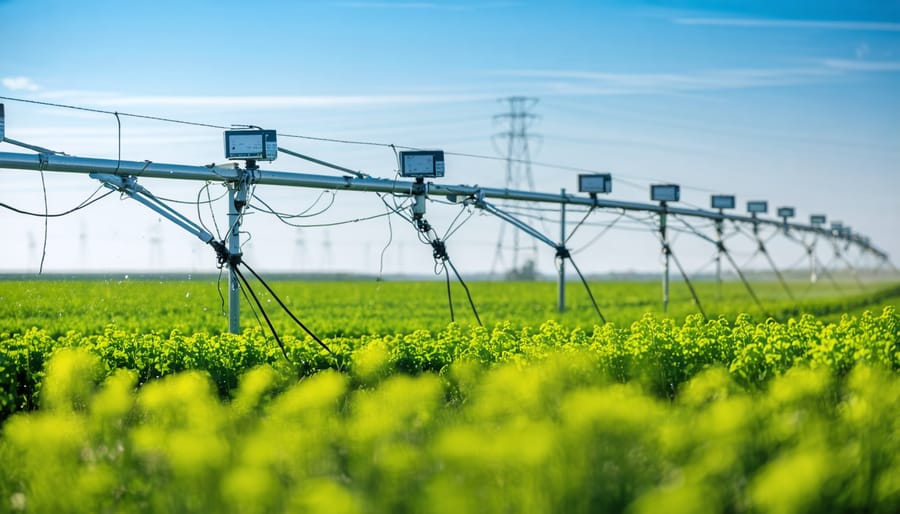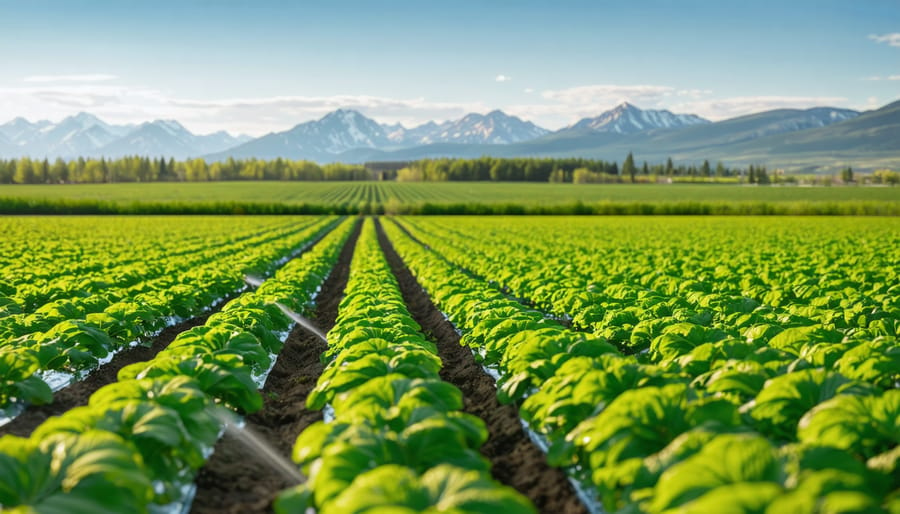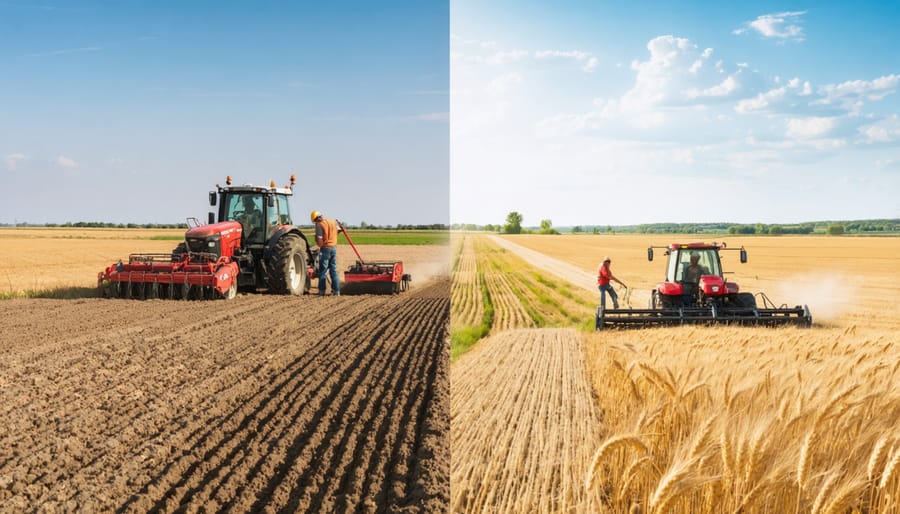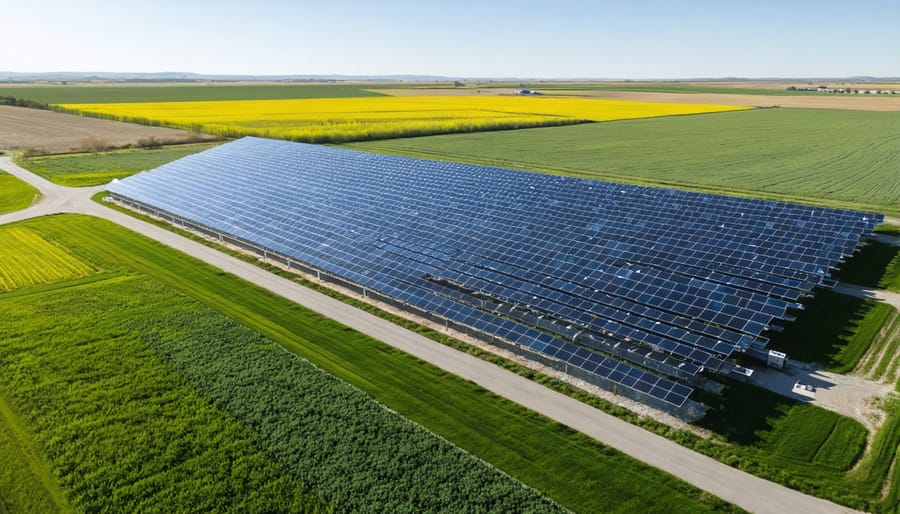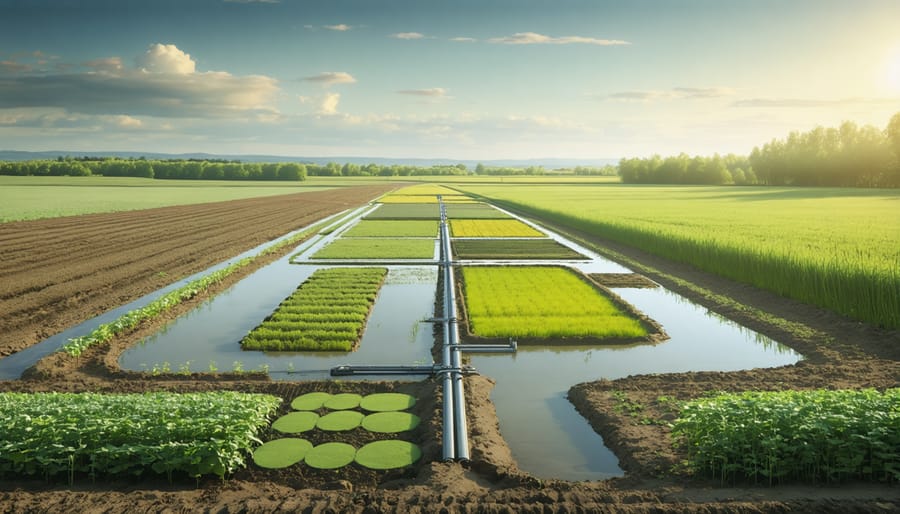Groundwater irrigation is a vital resource for farmers in arid regions, providing a reliable water supply when surface water is scarce. In Alberta, where agriculture is a key economic driver, efficient and sustainable groundwater management is crucial for the long-term viability of farming communities. With advancements in technology and best practices, groundwater irrigation offers numerous benefits, from increased crop yields to improved drought resilience. However, overuse and mismanagement can lead to aquifer depletion and water quality issues, underscoring the importance of responsible stewardship. As climate change intensifies water scarcity challenges, optimizing groundwater irrigation systems and adopting conservation measures will be essential for Alberta’s farmers to thrive in the face of uncertain future conditions. By harnessing the power of this hidden resource wisely, we can ensure a sustainable and prosperous agricultural sector for generations to come.
Understanding Groundwater Irrigation
What is Groundwater?
Groundwater is water that exists beneath the Earth’s surface in soil pores and rock formations. It is a crucial part of the water cycle, as precipitation seeps into the ground, replenishing aquifers. In Alberta, groundwater is a valuable resource for irrigation, particularly in areas with limited access to surface water. Aquifers act as natural reservoirs, storing water during wet periods and releasing it slowly over time. This makes groundwater a reliable source for irrigation, even during dry spells. By understanding the role of groundwater in the water cycle, farmers can make informed decisions about sustainable irrigation practices and water conservation.
Groundwater Extraction Methods
Groundwater extraction methods vary depending on the depth and accessibility of the aquifer. In Alberta, wells are the most common method, with depths ranging from a few meters to over 100 meters. These wells are typically drilled using truck-mounted rigs and lined with steel or plastic casings to prevent collapse and contamination. Submersible pumps are then installed to draw water to the surface, powered by electricity or diesel engines.
Another method is the use of boreholes, which are narrower than wells and can access deeper aquifers. Boreholes are drilled using specialized equipment and may require advanced techniques like hydraulic fracturing to enhance water flow. Solar-powered pumps are increasingly popular for their eco-friendliness and cost-effectiveness, particularly in remote areas without access to the electrical grid.
Farmers can also tap into shallow groundwater using tile drains or infiltration galleries. Tile drains are perforated pipes buried in fields to collect excess water, while infiltration galleries are horizontal wells that capture water from permeable layers near the surface. These methods are less common but can be useful in specific hydrogeological conditions.
Regardless of the extraction method, proper well construction, maintenance, and monitoring are crucial to ensure a safe and sustainable groundwater supply for irrigation.
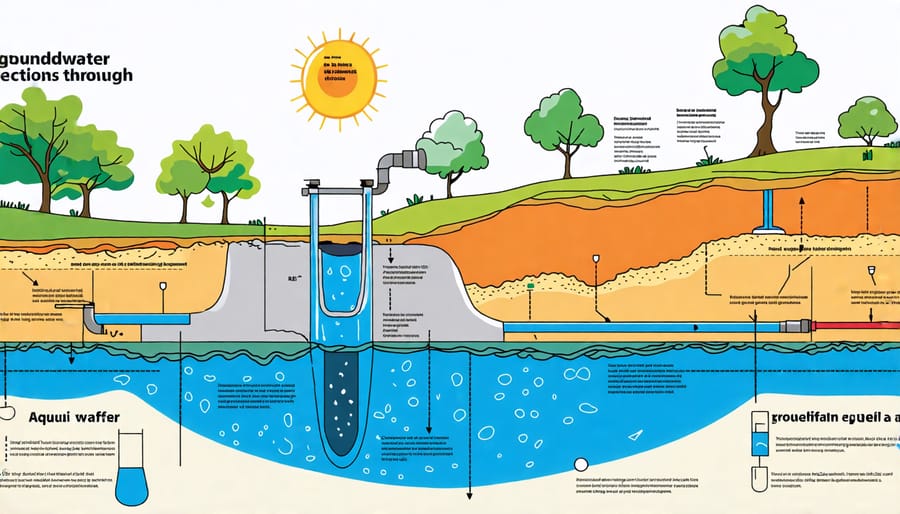
Advantages of Groundwater Irrigation
Groundwater irrigation offers numerous advantages for Canadian farmers, particularly in terms of reliability and water quality. Unlike surface water sources that can fluctuate with weather patterns, groundwater provides a consistent supply for crop irrigation. Groundwater is also generally free from pollutants and sediments, ensuring clean water for crops. Proper water infiltration techniques can help replenish aquifers, making groundwater a sustainable choice. Additionally, using groundwater reduces evaporation losses compared to surface irrigation methods, conserving this precious resource. These benefits make groundwater irrigation an attractive option for Alberta farmers seeking to optimize their agricultural practices.
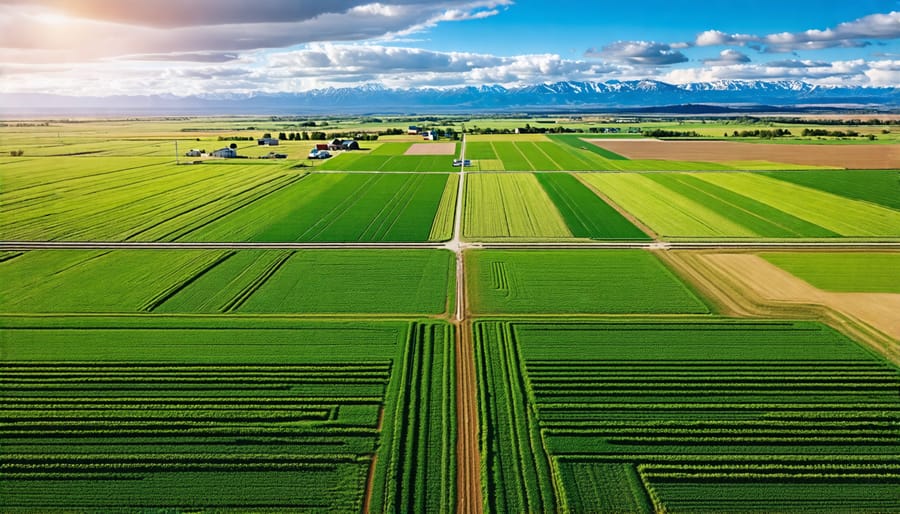
Groundwater Irrigation in Alberta
Alberta’s Groundwater Resources
Alberta is home to vast groundwater resources, with aquifers located throughout the province. The Paskapoo Formation, spanning from Calgary to Edmonton, is one of the largest and most productive aquifers in the region. Other significant aquifers include the Buried Valley Aquifer System in central Alberta and the Milk River Aquifer in the south.
Estimates suggest that Alberta’s groundwater reserves are substantial, with the potential to support sustainable irrigation practices. However, accurate assessments of groundwater availability can be challenging due to the complex nature of aquifer systems and varying recharge rates. Ongoing research and monitoring efforts aim to better understand the extent and sustainability of these valuable resources.
As the demand for water in agriculture continues to grow, responsible management of Alberta’s groundwater is crucial. By implementing best practices and innovative technologies, farmers can optimize their use of this precious resource while ensuring its long-term viability for future generations.
Groundwater-Irrigated Crops in Alberta
In Alberta, several crops rely heavily on groundwater irrigation to thrive. Potatoes, a staple in the province’s agricultural sector, benefit greatly from the consistent moisture provided by groundwater. Alberta’s cool climate and rich soil create ideal conditions for potato cultivation when combined with well-managed irrigation. Sugar beets, another important crop, require a steady water supply to achieve optimal growth and sugar content. Groundwater irrigation enables farmers to meet the specific water needs of sugar beets throughout the growing season. Additionally, Alberta’s diverse array of specialty crops, such as carrots, onions, and peas, depend on groundwater to maintain quality and yield consistency. By utilizing groundwater resources responsibly, farmers can ensure the long-term viability of these valuable crops. Adopting efficient irrigation techniques and monitoring water usage closely are key to maximizing the benefits of groundwater irrigation while minimizing its environmental impact.
Sustainable Groundwater Management
Monitoring Groundwater Levels
Regular monitoring of groundwater levels is essential for sustainable irrigation practices. By tracking changes over time, farmers can make informed decisions about water usage and prevent overexploitation of this precious resource. Common techniques include installing monitoring wells equipped with water level sensors, which provide real-time data on groundwater fluctuations. Electromagnetic surveys and remote sensing technologies, such as satellite imagery analysis, can also help map groundwater resources and detect changes in water table levels. Keeping detailed records of irrigation schedules, precipitation, and groundwater measurements allows farmers to identify trends and adjust their practices accordingly. Collaborating with local agricultural organizations and government agencies can provide access to additional monitoring resources and support in implementing sustainable groundwater management strategies. By actively monitoring groundwater levels, Alberta’s farmers can ensure the long-term viability of their irrigation systems while protecting this vital resource for future generations.
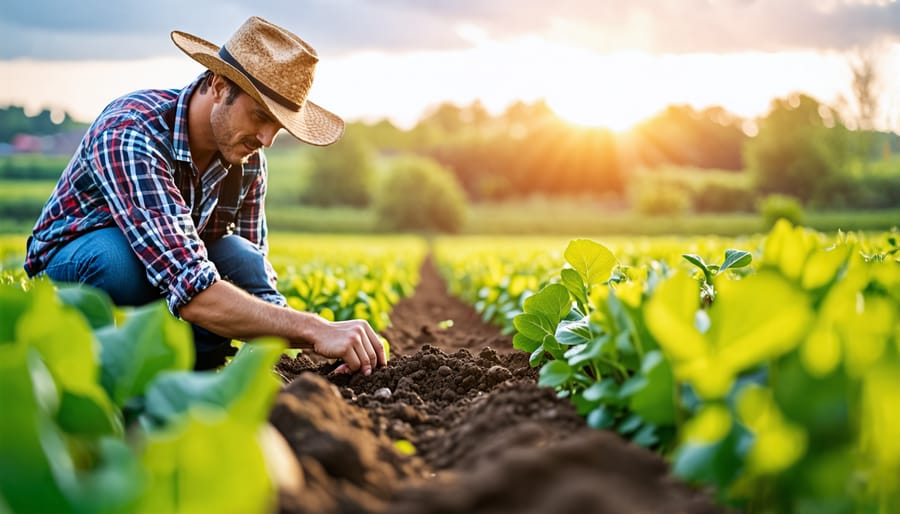
Efficient Irrigation Techniques
To conserve groundwater resources, Alberta farmers can implement efficient irrigation techniques. Drip irrigation is a highly effective method that delivers water directly to plant roots, minimizing evaporation and runoff. By using precision agriculture technologies, such as soil moisture sensors and weather monitoring systems, farmers can optimize irrigation scheduling and apply water only when necessary. These techniques not only conserve water but also improve crop yields and quality. For example, a southern Alberta farm reduced its water usage by 30% while increasing potato yields by adopting drip irrigation. Collaborating with local irrigation districts and agricultural extension services can help farmers access the knowledge and resources needed to implement these sustainable practices. By embracing efficient irrigation techniques, Alberta’s agricultural community can protect our precious groundwater resources for future generations while maintaining a thriving farming sector.
Protecting Groundwater Quality
Protecting groundwater quality is crucial for maintaining the long-term viability of groundwater irrigation systems and the health of our ecosystems. Agricultural runoff containing fertilizers, pesticides, and animal waste can seep into aquifers, leading to contamination that endangers both human health and the environment. To prevent contamination, farmers can adopt several measures.
Implementing precision agriculture techniques, such as targeted fertilizer application and integrated pest management, can minimize the use of chemicals and reduce the risk of runoff. Establishing buffer zones along waterways and planting cover crops can help filter out pollutants before they reach groundwater sources. Properly managing livestock waste through composting and controlled application to fields also plays a significant role in protecting water quality.
Regular testing of groundwater and soil can help farmers monitor for potential issues and take corrective action when needed. Collaborating with local watershed protection groups and participating in educational programs can provide valuable insights and support for implementing best practices.
By prioritizing groundwater protection, Alberta’s farmers not only safeguard their own water resources but also contribute to the overall health and resilience of their communities. Adopting sustainable practices demonstrates a commitment to responsible stewardship and helps ensure that groundwater irrigation remains a viable option for generations to come.
Case Studies and Expert Insights
Alberta farmers have been at the forefront of implementing sustainable groundwater irrigation practices. One notable example is the Smith family farm in southern Alberta. By investing in precision irrigation technology and regularly monitoring their groundwater levels, they have reduced their water usage by 25% while maintaining crop yields. “It’s all about finding the right balance,” says John Smith, the farm’s owner. “We want to be good stewards of our resources while ensuring the long-term viability of our operation.”
Another success story comes from the Wilson farm near Red Deer. They have implemented a comprehensive sustainable groundwater management plan that includes crop rotation, cover cropping, and no-till practices. These methods have improved their soil health and water retention, reducing the need for irrigation. “We’ve seen a significant reduction in our energy costs related to pumping water,” notes Sarah Wilson, the farm’s co-owner.
Agricultural experts also emphasize the importance of education and collaboration in promoting sustainable groundwater irrigation. “Farmers need access to the latest research and best practices,” says Dr. Emily Thompson, a water resource specialist with Alberta Agriculture and Forestry. “By working together and sharing knowledge, we can ensure that our groundwater resources are used responsibly and remain available for future generations.”
These case studies and expert insights highlight the progress being made by Alberta farmers in adopting sustainable groundwater irrigation practices. Through innovation, education, and cooperation, the agricultural community is working to protect this vital resource while maintaining the productivity and resilience of their farms.
Conclusion
In conclusion, groundwater irrigation plays a vital role in Alberta’s agricultural sector, supporting crop production and ensuring food security. By implementing sustainable groundwater management practices, such as monitoring water levels, using efficient irrigation systems, and adopting precision agriculture techniques, farmers can optimize their water use while minimizing environmental impacts. It is crucial for the agricultural community to work together to protect this precious resource for future generations. By sharing knowledge, collaborating with experts, and embracing innovative solutions, we can ensure the long-term viability of groundwater irrigation in Alberta. As responsible stewards of the land, let us prioritize the sustainable use of groundwater and inspire others to do the same.

